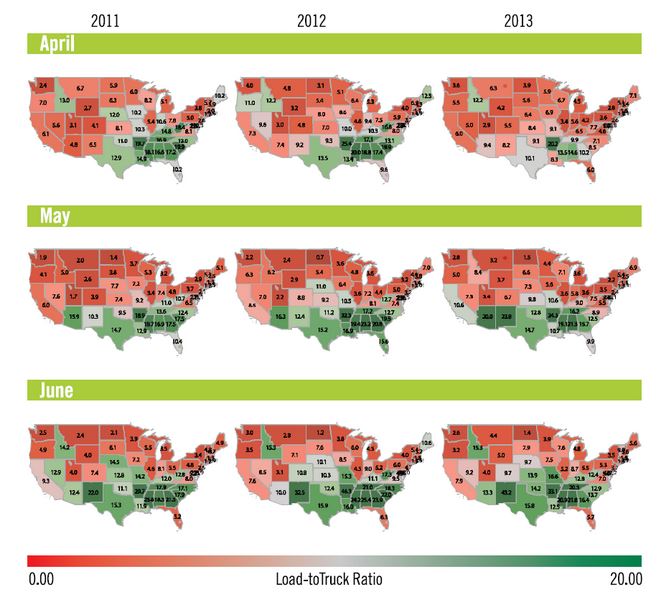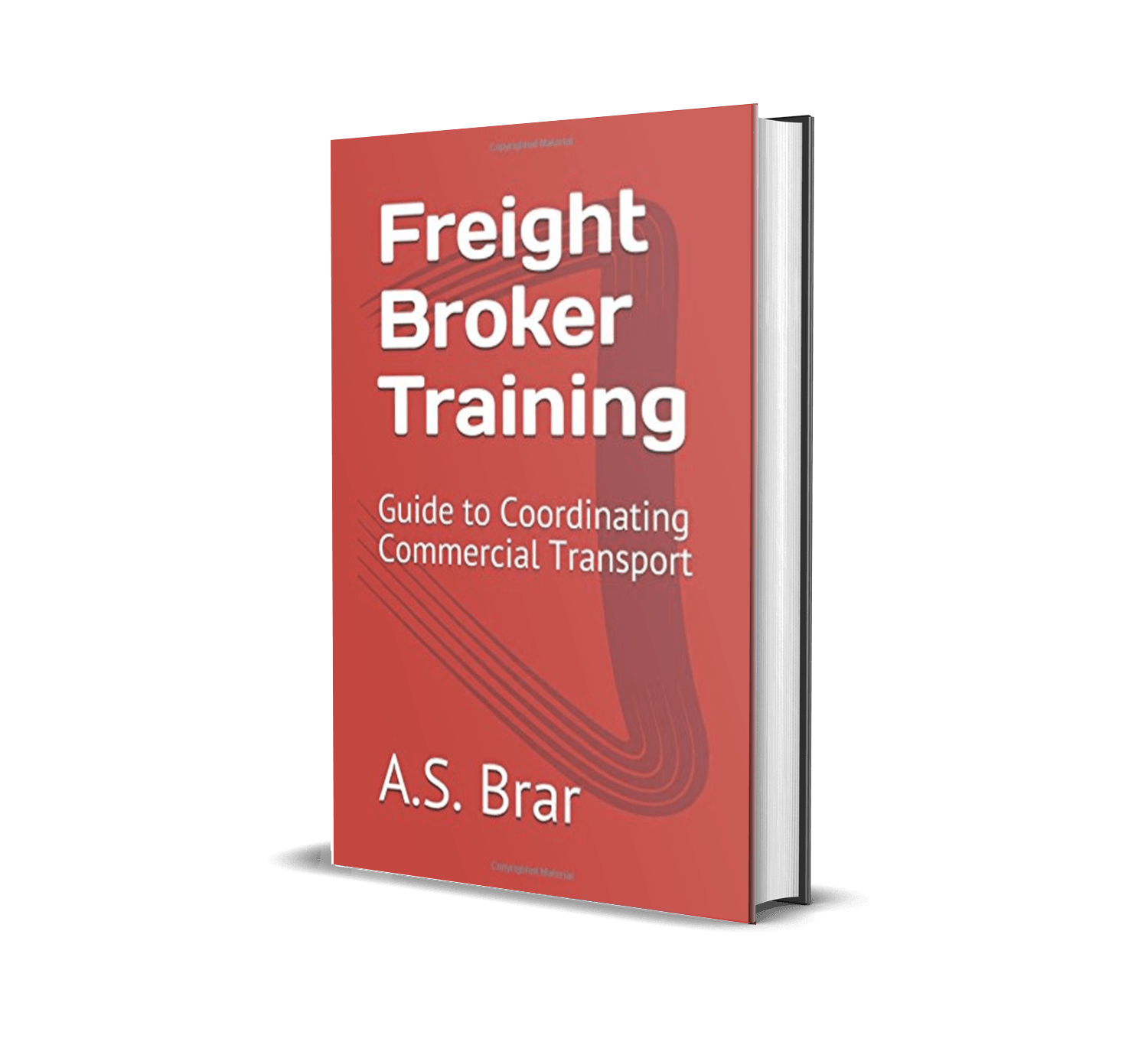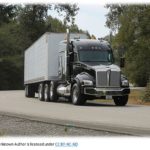What is managerial accounting and why is it beneficial for trucking?
Financial accounting is concerned with the report of company finances to external parties whereas managerial accounting has to do with enabling key company management to make decisions based on the current economic health of the business. Accounting for trucking business is an important part of maintaining the financial health of the company.
Variable cost as a percent of revenue
It is vital to measure variable cost ratio to understand what portion of revenue is being allocated to pay for variable costs. As volume of shipments increase, the rate at which variable cost increases must be less than the rate at which revenue increases. In order to break even, there is a certain amount of freight which needs to be transported in order for the variable and fixed costs to strike a balance point.
The factors that come into play when determining the true profitability impact of variable cost as a percent of revenue are:
Revenue per mile
A carrier should not have a sales or profitability plateau for longer than a 9-month period. If a plan to increase sales is not currently being implemented then a profitability strategy needs to be in motion. Therefore, if sales are stagnant then profitability must increase and if profits are stagnant then sales must increase.
Variable cost per mile
The following metrics are a part of the variable cost per mile:
- Tolls
- Diesel Fuel
- Fuel tax
- Oil and grease
- Communications (GPS etc)
- Driver wages
- Tires
- Truck maintenance and repair
To use ABC Transport as an example here is a breakdown of calculating variable cost per shipment:
Tolls: Not applicable
Diesel fuel: $1.00/litre with an average 4.2 MPG given truck hauls throughout BC. Therefore, variable fuel cost is $0.90 per mile.
Oil and grease: Oil change must be conducted regularly and average cost is $250/month. A standard of 10,0000 miles equals to a per mile rate of $0.025/mile.
Driver wages: Take for example a wage of $0.55/mile.
Average tire cost per month is $150/month and therefore if 10,000 standard miles are driven that is a cost of $0.015/mile
The total variable cost when including these expense metrics is $1.49.
Contribution margin per mile
Contribution margin per mile is the percentage of dollars that are allocated to covering fixed costs and classifying as profits once variable cost has been deducted from sales revenue. In order to calculate contribution margin, take total revenue per mile subtract variable cost per mile and divide by total revenue per mile. This will also give you variable cost as a percent of revenue if you subtract the contribution margin from 100.
If a company’s contribution margin is increasing, they are reducing their variable cost. This is also a way to measure if your variable cost is increasing or decreasing as sales revenue goes up.
Fixed costs
Fixed costs include equipment payments, workers compensation, legal/accounting/software fees, commercial general auto liability insurance, motor truck cargo insurance, non-owned trailer insurance, operating permits such as IRP plates, and truck parking.
Equipment payments are zero if the truck is paid off. Workers compensation is generally based upon the payroll total and can cost about $400 per driver per month. Legal/accounting/software fees are any monthly or annual fees your business pays such as Microsoft Office, TMS software, Quickbooks payroll accounting, and other consulting. Commercial general auto liability insurance is roughly $1000 for many owner operators. Motor truck cargo and non-owned trailer insurance combined can range between $500-$700 depending upon coverage level. Operating permits for the International Registration Plan are estimated to be about $700/year per jurisdiction (varies by percentage of distance travelled). Truck parking commonly costs $200-$300 per month.
Operating expenses as a percentage of revenue
Operating expenses as a percentage of revenue can also be referred to as operating ratio. Operating ratio is division of total operating expenses by the total revenue and then multiply by 100. The lower the operating ratio, the greater the operating income or profits of the business.
Preparing a variable/fixed income statement
Preparing a variable/fixed income statement allows you to perform a contribution margin analysis. After being acquainted with the variable/fixed cost statement, you will come to understand how important it is to control variable costs. The higher the variable cost is, the greater the revenue needs to be to reach the breakeven point. If variable cost (VC) increases it will generally cause an increase in the breakeven point by 2-3 times the VC increase percentage.
Take a look at the spreadsheet in Figure 1.2. This spreadsheet is one of the best trucking account spreadsheet templates available. If you would like a FREE copy of this spreadsheet send us an email through the contact us form.
Fringe benefits
Fringe benefits are benefits paid out to employees. They include employment insurance and pension contributions and workers compensation. These are also considered variable costs because they are dependent upon the total income of the driver.
Contribution margin
Contribution dollars per mile are monies that are being placed into the fixed costs and profit buckets after the variable bucket is full. The fixed cost percentage subtracted from the contribution margin = the profit.
chart of accounts for trucking
Here is a chart of accounts for trucking list that you can use while preparing your own ledgers. This is a good basis to build a money ledger for truckers.
- Accounting Services
- Bobtail (Empty Miles)
- Broker Fees
- Trucking Factoring Fees
- Freight Claims
- Driver Wages
- Damage
- Electronic logbooks
- Fax/scanning
- Fuel (Diesel)
- Fuel (DPF)
- Internet
- Insurance
- Job Search Expenses
- License permits (IRP)
- Loan payments and interest
- Lodging
- Lumper fees
- Meals and Entertainment
- Misc supplies
- Oil Change
- Office Space rental
- Parking and Tolls
- Parts
- Repairs (Labour cost)
- Equipment depreciation
- Trailer/truck rentals
- Trailer/truck lease payments
- IFTA reporting and taxes
- Telephone/cell phone plan
- Tire costs
- Truck/trailer wash
- Weight fees/scales
- Workers compensation
- Payroll contributions
In future articles, customer profitability analysis, capacity utilization, and customer base analysis will be discussed. If you found this accounting for trucking business article of use, please take a moment to share it on




This is a very comprehensive portrayal of actual costs that all truckers can expect to encounter. The article itself has clearly laid out a great explanation of margins and break-even points and, sadly, I’m wondering how many truckers actually track all these expenses to learn how they are performing. I am also curious to know when this article was written.
John – Atex In TX
Hi, Truck Freighter.
Hope you can help me secure an accounting template and files in order to monitor my books.
Thanks.
I am very interested in the chart of accounts spreadsheet
Excellent information? I need this spreadsheet.